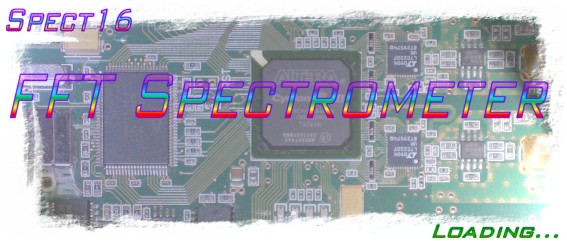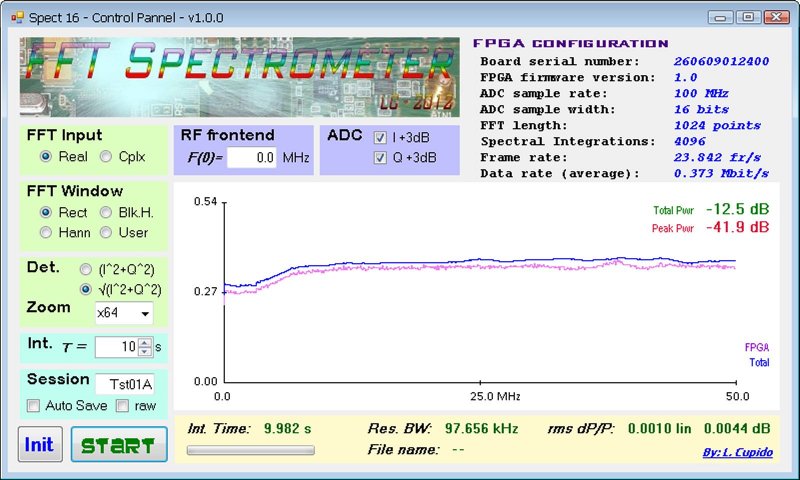|
Single ended IF configuration using just one
ADC input (or both in parallel) is possible and spectrometry uses only the positive
side of the spectrum. This configuration is the simple but uses only half of the
bandwidth available, it allows however a quick connection to any existing radio telescope setup.
Complex IF signals can be used where ADC signals
came from an I,Q IF converter. This will be using the full bandwidth.
In this configuration the bandwidth measured is equal to the sampling frequency.
Low pass filters are of great importance to let only pass the desired bandwidth
and should be designed to suit the specific the sampling rate. Note
that different FPGA cores may have various sampling frequencies
and therefore different filters would be required.
As the ADC have enough bandwith (500MHz) on their input it can be used also
in a under-sampling mode where the input frequency range is criteriously
placed in any band segment above the sampling frequency. For a 100Ms/s
sampling frequency and the spectrometer being used in real mode
(while using a 2MHz margin at both sides) it can be used for the
following segments 2-48MHz (base-band), 52-98MHz, 102-148MHz, 152-198MHz,
202-248MHz, 252-298MHz, 302-348MHz, 352-398MHz, etc.
The same can be done in complex mode therefore using the segments
-98+98MHz (base-band), 52-148MHz, 152-248MHz, 252-348MHz etc.
This were just examples to illustrate the under-samplig usage.
|

Spectrometer configuration for real mode IF.
Covering about 48MHz (for a 100Ms/s configuration).
LO placed below the IF lower band edge.

Spectrometer configuration for complex mode IF.
Covering 100MHz (for a 100Ms/s configuration).
LO placed at the IF center frequency.
|





 Luis Cupido
Luis Cupido